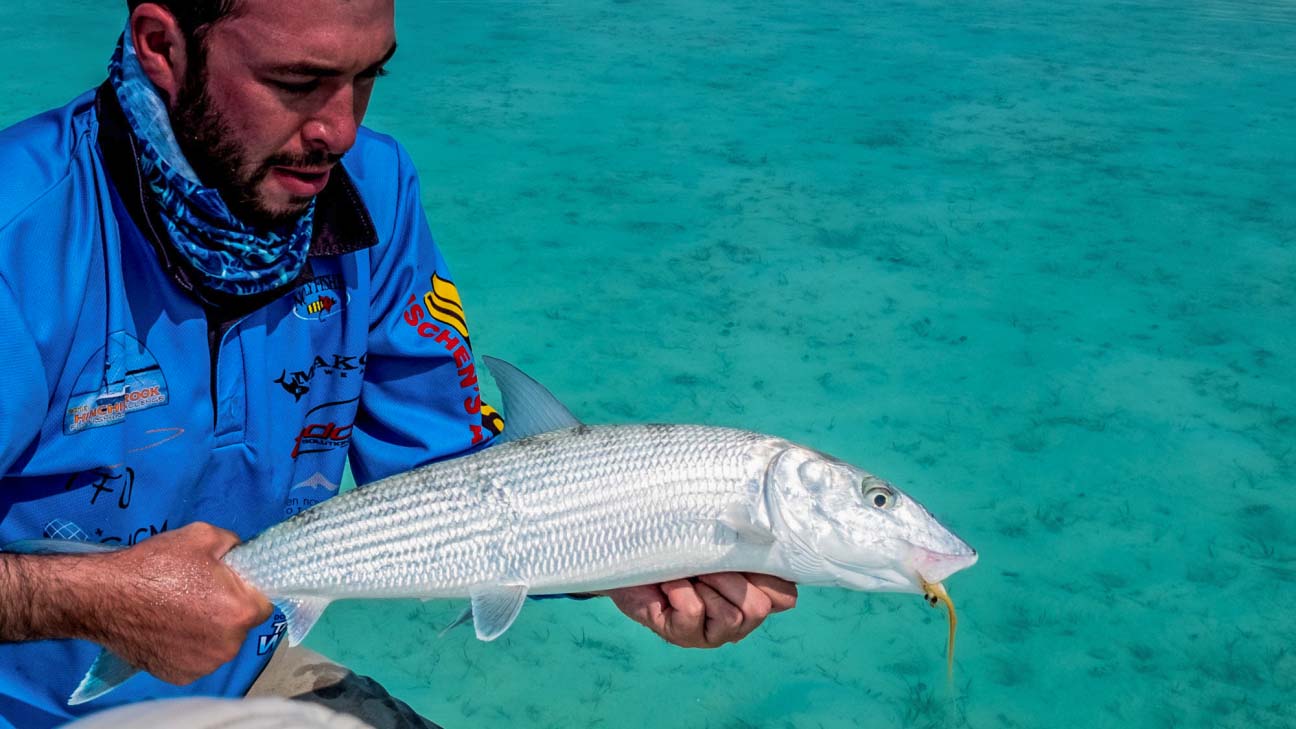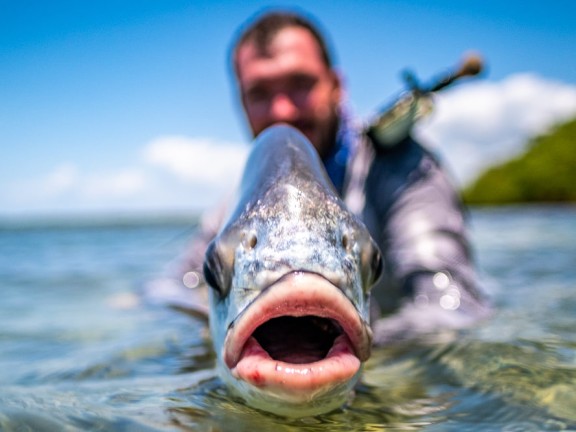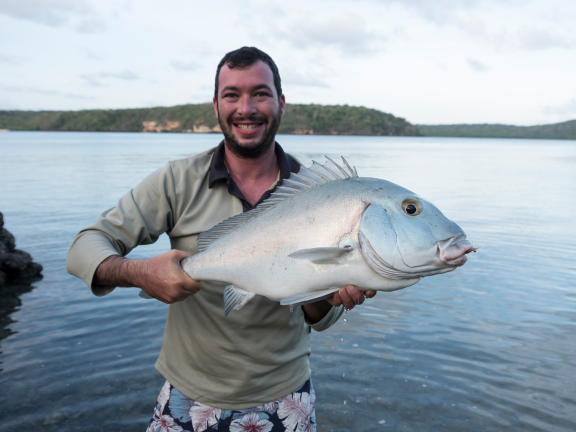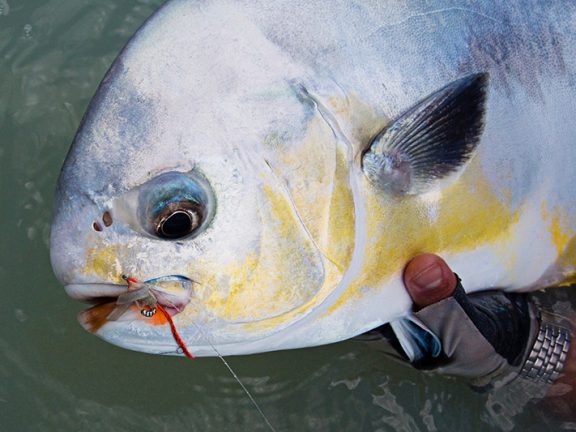You’re about to embark on your first day of bonefishing.
You’ve done all of your research, carefully picked the right location, and reserved the best dates. You’ve also spoken with your guide, purchased your bonefish setup, and tied all of the right flies in various weights. Now what more can you do to prepare yourself for your first day of bonefishing? Well, you’re in luck, because this article is written specifically for you.
Communication is key
If you want to catch fish, you and your guide must work as a team. This starts the second you get on the flats, before you even start looking for fish.
The first step is to calibrate your distance. Some guides measure distance from the bow of the boat, while others from the tip of the rod. While this won’t make a huge difference at 70,’ it sure does at 10’ to 35’, which is where most of the fish will be. Throw out a couple of practice casts at 10’, 30’ and 50’, and ask your guide how far they would call each of your casts. Keep doing this until you and your guide are on the same page.
The second step is to make sure you and your guide are speaking the same language. Clearly establish what happens when your guide spots a fish. Some guides will say “bonefish 12 o’clock, go! Cast now!” Or even worse, “bonefish by that mangrove, see it? Cast, CAST!”
Ideally, your guide needs to give you the direction based on the clock, and the distance from you to the fish eg. “bonefish 2 o’clock, 40 feet, see it?” Once the guide tells you where to look, it is your turn to find the fish, however, most of the time you will not see it right away. If you don’t see the fish, point your rod tip where you think it is and ask your guide if its to the right or left – they should be able to help you find your target. Once you spot the fish, calmly communicate with your guide, and they will tell you where to place your cast.

Be Ready!
This is the most under appreciated aspect of bonefishing. While searching for fish, you need to be focused and ready to make a cast in any direction.
There are three parts to the equation: position, line management, and focus. The correct ‘ready’ position for bonefishing is fly in hand with approximately 6-12’ of fly line out of the guides. Keep your rod off to your side and parallel to the water. Your fly line should be lying untangled on the deck, or behind the casting platform (unless you are using a stripping basket). You should be standing straight, looking forward, and scanning the water approximately 50’ – 100’ in the direction the boat is moving. Whether the guide calls out a fish at 3 or 9 o’clock, you should be able to square up to it with a quick step and pivot. If you ever catch yourself out of this position, fix it! You have no idea how many times I see anglers miss fish because they either fumble their line around the rod tip or have some algae attached to their fly.
Stay Calm
Staying calm is the toughest part of the puzzle, but it only gets easier with experience. When your guide yells out, “bonefish 1 o’clock, 60 feet!”, don’t panic and start casting right away.
Remember not to skip any of these steps: find the fish, listen to your guide, and then make the cast. Although you may take too long to find the fish and it may spook before you get a chance to cast, missing a fish is much better than blowing a cast and spooking a whole bunch of fish that you didn’t even know were on the flat.

Strip – Strike — learn it, love it, do it!
There is nothing more frustrating than watching an angler blow a large bonefish with a trout strike. Bonefish peel off line much quicker than trout that it happens all the time, and not just to new anglers.
Once your hook is set in a bonefish’s mouth, make sure to clear your line properly. This means arms out, with your non-dominant hand controlling the loose line between your thumb and fingers. Keep in mind bonefish are like drag racers with bad ADHD. They will peel off 50 yards of line, and then U-turn and race right towards you. Make sure you are ready to pick up that line and maintain a tight, slack-free connection!
While there is certainly much more to learn about bonefishing, this article should be enough to get you through your very first day, and hopefully put a couple fish in the boat. Don’t beat yourself up when you blow a shot — there will be more — I promise. Have fun, listen to your guide, and be careful, flats fishing is addictive!






